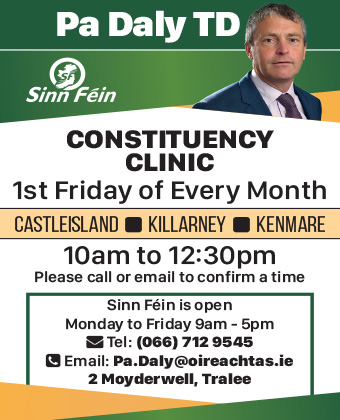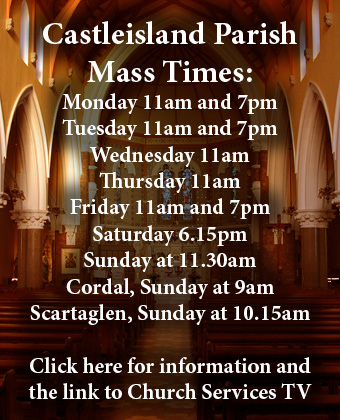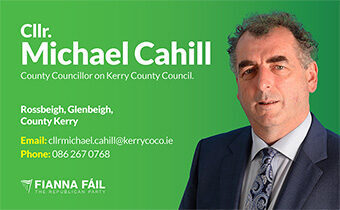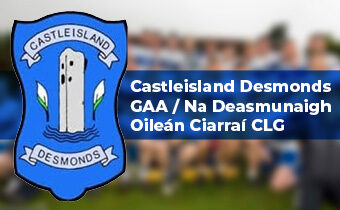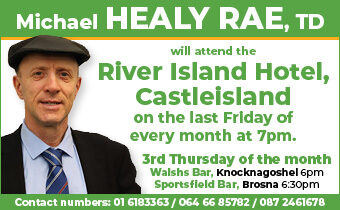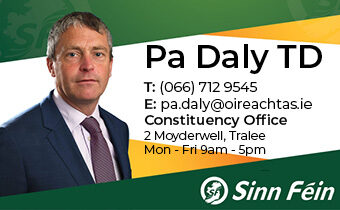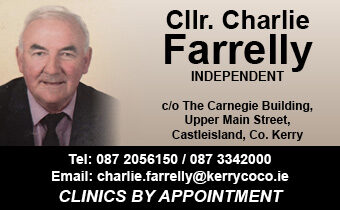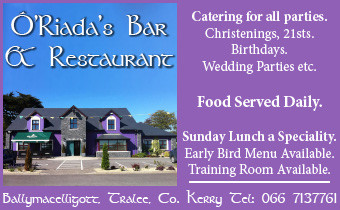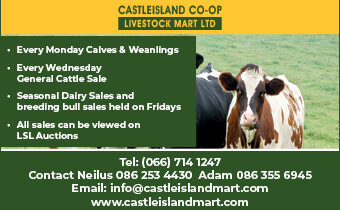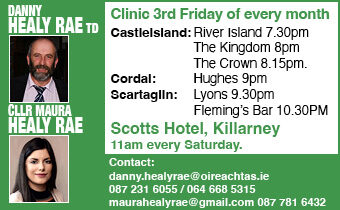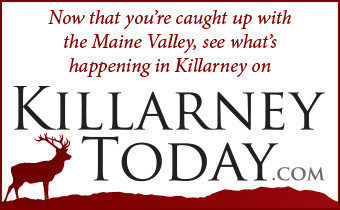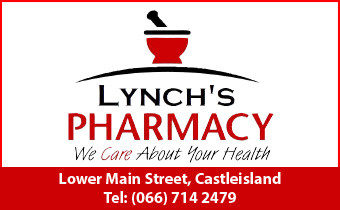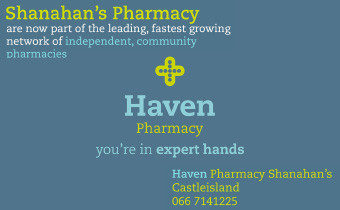There is an unprecedented level of local interest in tomorrow’s annual, November 1st Horse Fair. Initially, because there was confusion around a notion that the fair wouldn’t be held on a Saturday. That was never, ever the case. The one and only reason that the Castleisland Horse Fair wouldn’t be held on November 1st is when that date happens to fall on a Sunday. Then the fair goes to the Monday. And I’m sure that long held tradition came from the ingrained respect for the Sabbath Day culture.
It would be a brave or foolish soul who’d try to put an exact date of origin on the fair day tradition that created for Castleisland its ‘Market Town’ image.
Trading Post
If, as is commonly broadcast, the castle was indeed built here in 1226 it must be ‘fair’ to assume that an area rich in flowing, spring water and pasture land would be used as a trading post before the castle got its planning permission.
Castleisland’s calendar was full, from one end of the year to the other, with fair day dates. And, the town once boasted of having the only, regular, monthly horse fair in the county of Kerry.
There were fairs here on: January 1st; February 2nd; March 17th; Easter Monday;April 20th; May 20th; June 24th; August 1st; September 8th; October 1st and November 30th.
In more recent times there were fortnightly pig fairs on Tuesdays and a huge poultry fair on December 8th.
Ground for Grazing
The added attraction of the ‘Fair Day’ was also quoted extensively in newspaper and poster advertisements by auctioneers when selling off herds of cattle, farms of land or simply letting a parcel of ground for grazing.
As a gauge of the importance of the fair day in Castleisland , a change in the pig fair day made front page news in The Kerryman on December 15-1962.
The piece was headlined: ‘Casleisland pig fair day change ? and it outlined the reasons behind the change:
“The five-day working week now in operation in Tralee’s bacon factories may mean a switch in Castleisland pig fair from Thursday to Tuesday.
If suggestions made this week are approved, a pig fair will be held in the town every second Tuesday instead of the day before the cattle fair as previously.
The new arrangement is planned to commence on Tuesday, January 22 next.
Up to about two years ago, pig fairs were held once a month, but since then, because of the big supply of pigs in the area, they have been held once a fortnight.
According to Mr. Maurice JK O’Connor, who has forty year’s experience of pig fairs and pig feeding in the town, the average supply of pigs at each fair is about 600.
“Our pig fairs were never going better,” he declared this week. “They keep the town going.”
Mr.D.J. Browne, one of the biggest pig feeders in the district, also buys pigs on the scales three times a week for the factory.
“We buy about 150 Bonhams a fortnight at the pig fair and we buy up between 300 and 500 pigs both at the market and on the scales,” said Mr. Browne who feeds about 1,000 pigs.
Buyers from Tralee, Cavan, Limerick and Cork attend the fairs which are supplied by pig breeders from a radius of about ten miles.
“This is about the biggest pig feeding district in Munster,’ claims Mr. Browne, who also says the fairs are a great boon to the business of the thriving mid-Kerry town.
Many pig feeders in the area keep up to 100 pigs at the time and so keen are they on improving their stocks that a local farmer recently went to the North of Ireland and purchased a boar for £350.”
Rural Town
The late Sheila Prendiville passed away in January 2008 at the fine age of 97. As a grocer and publican at No 22 Main Street for the greater part of those years she was better qualified than most to pass judgement on what the fair days meant to the commercial life of a small, rural town like Castleisland.
Sheila often recalled the atmosphere of those great days for customers who didn’t experience them.
Someone would be sent to Hogan’s or TH Murphy’s for saw-dust the day before the fair. There was a an inch of it or more on the floor of the pub on the day of the fair and it soaked the water on bad days and it made the job of cleaning up so much easier later on.
The publicans opened their doors early on fair days and did a roaring trade from morning ‘til night.
“The first thing you’d hear was the bellowing and the noise in the distance from the different roads into the town.
Then, the noise on the street as the men from the different business in town arranged the trestles in front of their houses in readiness for the crowd.
It would start with a trickle from one side or another and before you knew it the town was packed with men and animals tired from their long and often troublesome journeys.
Farmers, who would often leave their ‘boys’ minding the animals on the street, would duck into the snug with a buyer and the dealing and the arguing over a half-crown here ten bob there could go on for half an hour or more.
If they made the deal you’d think they were the best of friends but the farmer stood the drink. The dealers always came out at the right side of the bargain,” Sheila recalled.
Harvest Fairs
She remembered that the harvest fair were best as the farmers and the workers had more time to hang around after the event.
“When there were crops to be gathered they didn’t hang around for too long. But once that was done they enjoyed themselves and there were great evenings of music and dancing.”
“The travelling salesmen and the hawkers would all come in on the day before the fairs on the evening trains. You’d see the boys from the different hotels in town heading down to the railway with their hand trucks for the luggage of their guests.”
The railway, which operated in Castleisland from 1877 to 1977, played a central role on the days of the fairs. On these special occasions goods trains transported the animals from the town to destinations dictated by their new owners.
Sheila’s favourite story though concerned a neighbouring trader whose mode of operation on the day was legendary. Nano Moran’s little shop was at the Tralee Road side of Hogan’s and was dwarfed by her builders’ merchant and general hardware neighbours.
Nano did a roaring trade in meat pies and salted fish during fair days. She kept the fish in a barrel on which she kept a slab of slate. The slab was used to gut the fish and, after a dash of cold water, the pastry for the pies would be rolled out on it too. And so would the plaited brown and white toffee strips which the industrious Nano also made.
Imaginary Strips
The telling of the plaiting of the toffee strips was where Sheila would get really animated. She’d stand in the middle of the floor and take the two imaginary strips of toffee hanging from the imaginary hook in the imaginary ceiling. In preparation, she’s spit on both hands and at regular intervals during the tricky toffee twisting operation.
Then, taking hold of the imaginary knife – which had earlier gutted the fish – she’d place the plaited toffee on the same slab and cut it into ‘sweet’ or bar sized pieces.
“And no one ever got sick or food poison from eating there,” Sheila would add as she sat down laughing and tired from her performance.
Nano Moran was a woman ahead of her time. Sheila recalled “packages of her toffee going down to the railway and on the train for England and America – imagine that at that time,” she’d ask her captive audience.
Recorded Incidents
Fair days in Castleisland were not always fun and games and the confusion of the day was often used during the ‘troubles’ to devastating and deadly effect. Several recorded incidents would make for a piece for another day.
Now, only the annual horse fair on November 1 stands as a reminder of what the town was like in the days when the local economy was truly in the hands of the local.
The horse fair still attracts visitors, traders and dealers from all parts of the country and it too has had its ups and downs according to the fortunes of the times.
It has become one of the busiest and best attended fairs in the region of late. Pubs and restaurants have had queues lining up outside them in recent years. And, as in days of yore, merriment, music and song have become an integral part of the great survivor.
Status Symbols
The fortunes of the fair have been driven, in more recent times, by the newly created ‘wealth’ of the Celtic Tiger years. Owning a horse or two and joining a hunt club became the required status symbols of a bold, new era.
That it has survived so many trials and tribulations, since it was first held away back in the fogs of time, the fair is a testament to the place of the horse and the traditions surrounding it in Irish society.
The Castleisland November 1 fair has been given a huge boost and breathing space by the opening of the N21 Bypass on October 22-2010. Traffic on the day is no longer the headache it used to be. Anyone with no business in town can just whiz by unfettered.
Now that we are finding things tougher, than in the heady times when horses were bought with little thought , it would be nice to think that this most graceful of animals will continue to enjoy the status in which it has been held by generations of Irish people.







